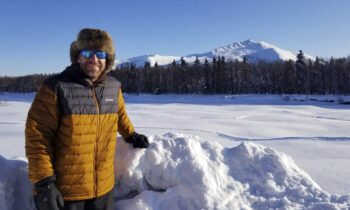By: Sheila Crowley
Murray County News Staffwriter
Bees are fascinating and inspiring…at least for some. This is the driving force behind a group of eight researchers living in Slayton and Chandler.
They are a part of Minnesota Agriculture for Pollinators Project (MAPP). The project is conducted by scientists in the Department of Entomology and the Institute on the Environment at the University of Minnesota. It was one of many of the granting opportunities the Native Bee Lab has taken on.
The decline in bee population has researchers concerned and part of this project is to bring an awareness of the problem.
Bees have a vital function since the world agriculture depends on 70% of these insects, said more clearly 70 of every 100 products that are used to feed the world depend exclusively on the bees. Without pollination, plants could not reproduce.
Several of the lead scientists at the Cariveau lab wanted to examine what could be done in a part of the state that is predominantly ag – yet might benefit from restoration efforts. The researchers hope to find answers for such questions as ‘what this may look like for the pollinator community as well as soybean aphid pests, etc.
They use a landscape ecology approach to study basic questions in ecology and evolution as well as conservation biology. They are particularly interested in how conservation actions such as restoration and land management influence the structure of wild bee communities and the pollination services they provide to native plants and crops.
The grant offers funding for five years to complete this study. “Ultimately we are trying to pull on the landscape experimentation that most benefits growers, landowners, homeowners, along with people who are looking to establish habitat for pollinators and beneficial insects,” explained Kiley Friedrich, Research Scientist Pollinator Crew Leader. She, along with the rest of her crew, is studying what components of a restoration project best contribute to pollinators: plot size, seed mix, or landscape context which make the best habitat for the bees and beneficial insects along with pest control. They are also studying what might be the most economical and efficient way to add restoration habitat to the landscape.
Currently, there are 45 landowner sites participating in the MAPP project in southwestern Minnesota which range in size from one acre to 15 acres. The plots placed in consideration were divided into three different categories. 1. The percent of natural area…high percent natural or high percent ag surrounding the land piece. She said the later, from a bee’s perspective, is poor forage and the question can be raised as to whether there is an impact by spreading cafeteria-style forage on the landscape will it actually have a grade of impact. 2. Plot size..how big or how small. The three categories included one acre as the smallest and the largest at 15 acres. She said the study employs 350 total acres. 3. Seed mix. Is it the prairie mix that bursts from a floral capacity in two to three years or the annual forage mix with a ton of lagoons and early annuals such as black-eyed Susans. “These are the plants we know honey bees love,” shared Friedrich.
To read the rest of this article – pick up a copy of this weeks Murray County News or subscribe to our e-edition at http://eedition.murraycountynews.net/sub/account_login.asp.





